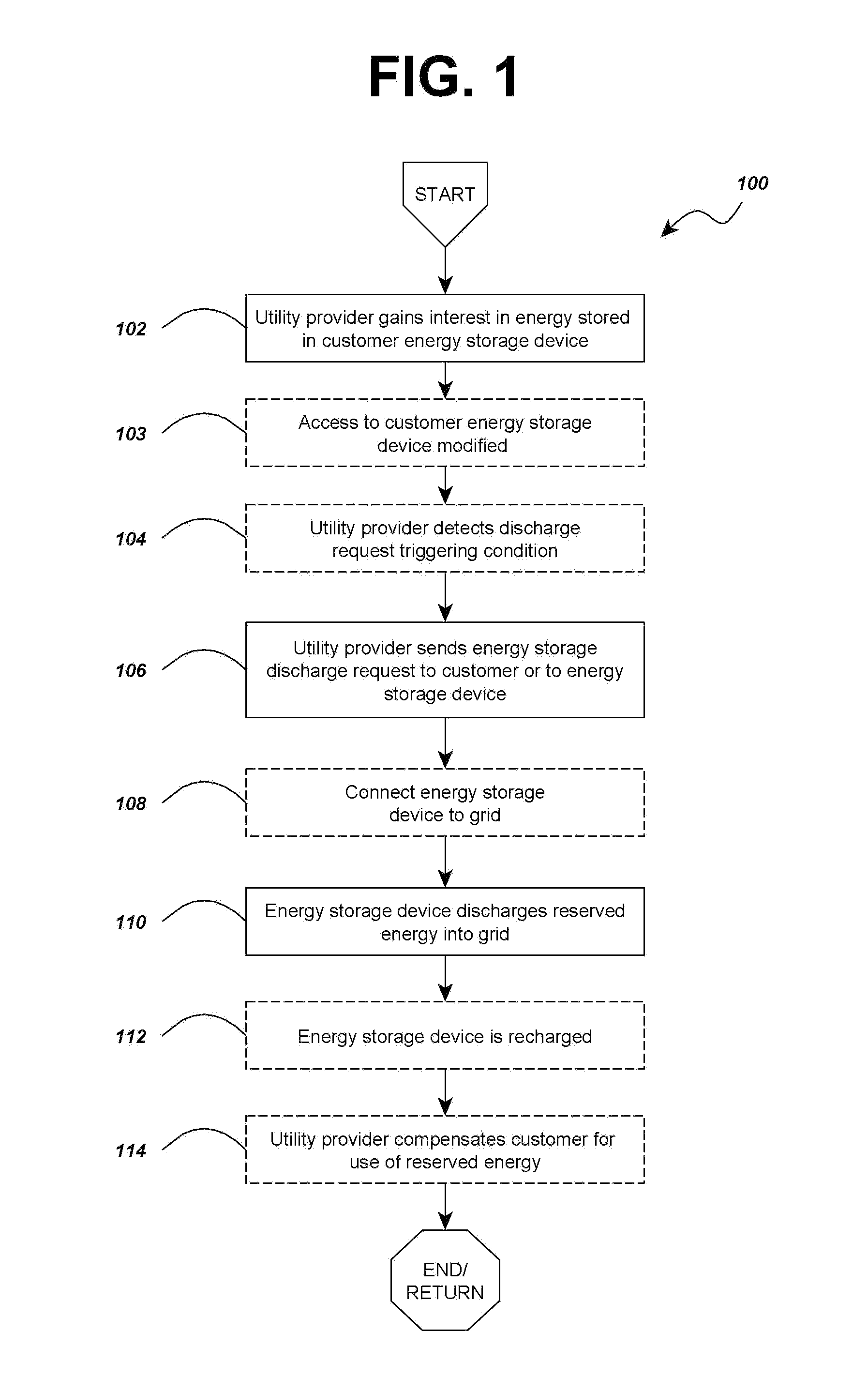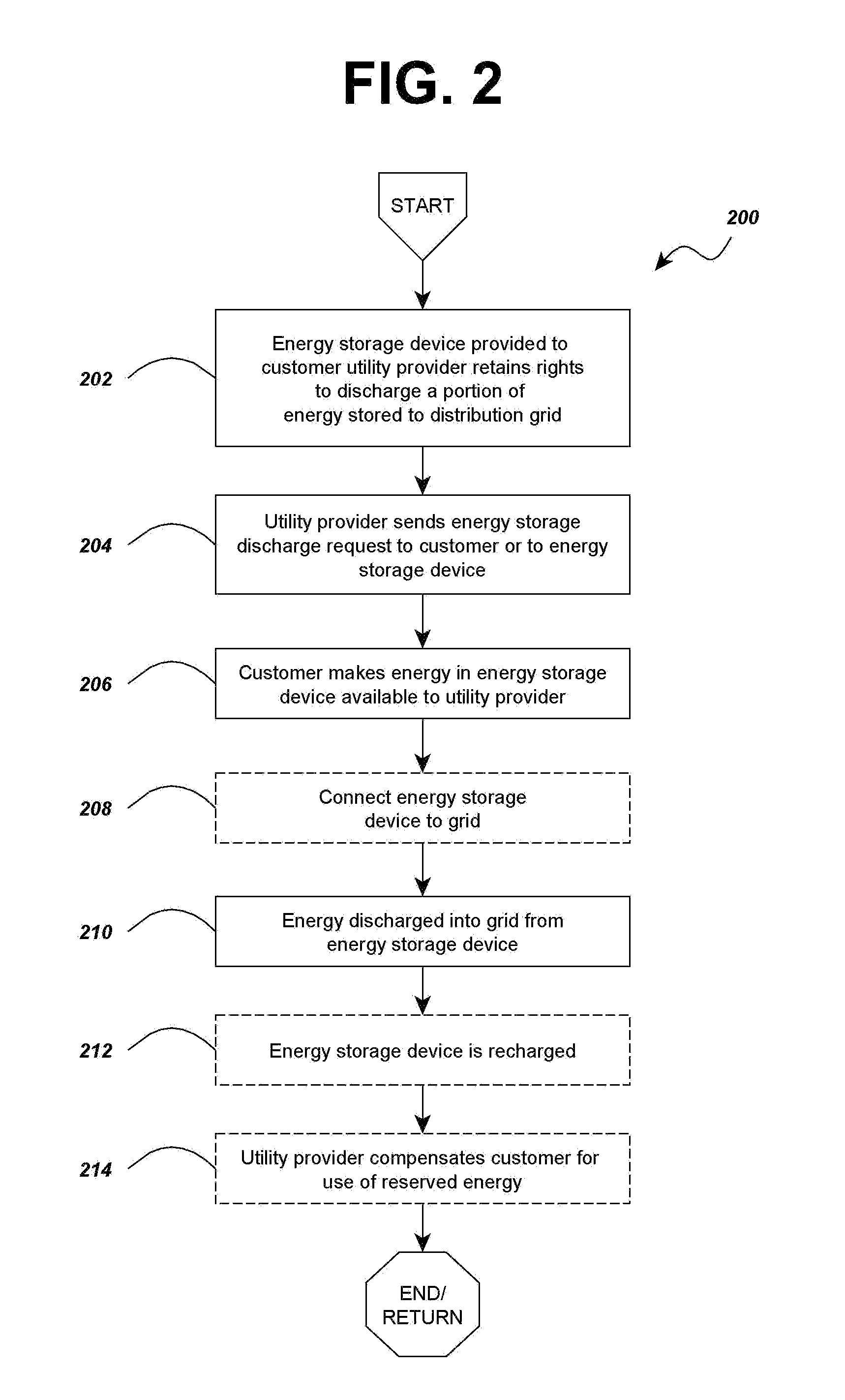Energy allocation for energy storage cooperation
a technology for energy allocation and cooperation, applied in the direction of power network operation system integration, ac network load balancing, ac network voltage adjustment, etc., can solve the problems of difficult to track whether customers actually comply with their reduction obligations, difficult to determine the amount of reduction produced by each customer, etc., to reduce the total cost of ownership and other costs, increase efficiency, and reduce the effect of reliance on peaking power plants
- Summary
- Abstract
- Description
- Claims
- Application Information
AI Technical Summary
Benefits of technology
Problems solved by technology
Method used
Image
Examples
Embodiment Construction
A. General Definitions and Information
[0040]Generally speaking, a utility provider in the embodiments herein may include a utility company such as an electricity producing or distributing company operating a utility distribution grid that transfers electrical energy from a generating means to customers for electricity consumption. The utility distribution grid may be comprised of various generation and transmission resources, such as, for example, power plants, feeders, substations, transformers, power lines, etc. In some embodiments a utility provider may be a water company managing a water distribution network (which may be referred to as a distribution grid) where water is directed and used in a process to produce electrical energy. A customer of the utility provider is an entity such as a person, household, structure, corporation, or business receiving or consuming energy directly from the utility distribution grid, but a customer may also be another utility provider which consu...
PUM
 Login to View More
Login to View More Abstract
Description
Claims
Application Information
 Login to View More
Login to View More - R&D
- Intellectual Property
- Life Sciences
- Materials
- Tech Scout
- Unparalleled Data Quality
- Higher Quality Content
- 60% Fewer Hallucinations
Browse by: Latest US Patents, China's latest patents, Technical Efficacy Thesaurus, Application Domain, Technology Topic, Popular Technical Reports.
© 2025 PatSnap. All rights reserved.Legal|Privacy policy|Modern Slavery Act Transparency Statement|Sitemap|About US| Contact US: help@patsnap.com



